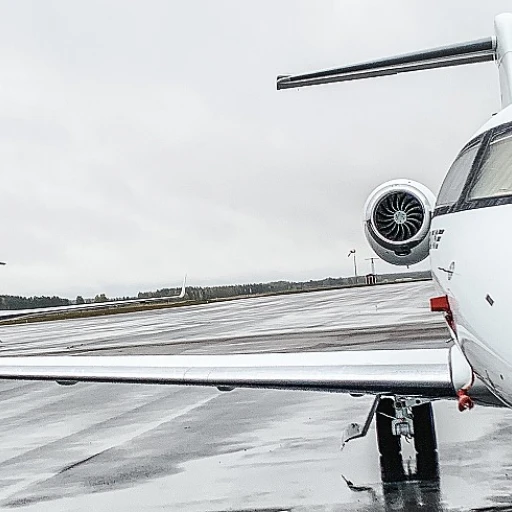Navigating the Altitude of Accountability: Essential Tax Strategies for Fractional Jet Ownership
When it comes to commanding the skies in your piece of a private jet, the thin air of high finance and taxation can often obscure the clarity of your luxurious ascent. Owning a fraction of a flying masterpiece is undeniably appealing; it's the financial fluency in tax navigation that separates the savvy owners from those caught in a tailspin.
Let's chuckle away the complexity, shall we? Picture this: You've got a bigger slice of that sleek, silver bird than the pie chart at your last board meeting. But with great ownership comes great fiscal responsibility—tax strategies are the co-pilot you didn't know you needed!
Strategize Your Flight Path: Understanding the Tax Implications
Flying privately isn't just about basking in the glory of the clouds—it's also about cloud computing your taxes. Implementing smart tax strategies ensures that your bank account doesn't experience turbulence.
Did you know that depreciation deductions on aircraft can be a goldmine? Or that a thorough logbook isn't just a pilot's diary but a repository of golden tax-saving data?
Fuel tax credits might sound as exciting as watching paint dry on your jet's wing, but they're a serious nugget of savings for the informed jet-setter.
And before you taxi to that offshore haven, remember that international waters can be tricky. But with the right advice, you're not just avoiding storms; you're chasing tax-friendly sunsets.
The Tax Hangar: Lease versus Ownership Structures
Choosing between a full ownership or a fractional piece of the sky-high pie? It's not so much 'eeny, meeny, miny, moe' but a strategic decision that echoes in the chambers of tax planning.
Lease arrangements can often cloak themselves in the appeal of flexibility—but beware, the cloaks of Darth Tax-us are strong with this one. Know the nuances, or find yourself paying homage to the tax lords unnecessarily.
Remember, with ownership, the IRS might just invite themselves to your hangar party. And while they might not appreciate the vintage champagne, they'll surely bust out the calculator.
Calling on a Copilot: The Must-Have Financial Expertise
Let's face it; the only decimal points you want to see are on your aircraft's altitude reading, not on a tax document. This is where bringing a trusted tax advisor onboard isn't just smart; it's a non-negotiable.
These aviators of assets help you avoid the Bermuda Triangle of tax errors and are worth their weight in aviation fuel when it comes to the IRS.
And don't forget about tax benefits for work-related travel. Jetting off to a conference? That plush leather seat you're reclining in could be part of your next tax deduction. Shrewd, isn't it?
Final Approach: Monitoring Regulatory Shifts
Like the shifting winds, tax regulations are always on the move—a fact more reliable than the in-flight WiFi signal.
Staying informed on the ever-changing tax landscape is like having an eagle's eye view of potential financial storms. You don't want to get caught unprepared when the IRS rolls out their next line of defense.
So there you have it, a rundown as smooth as your jet's landing. Understanding the interplay between tax strategy and fractional jet ownership isn't just beneficial; it's essential. And who knows, with the money you save, maybe you can add an extra caviar station on your next flight—or better yet, invest in a larger fraction of that sky chariot!
References:
- 'Business Use of Aircraft: Tax Implications for Corporations and Pass-Through Entities' - Journal of Accountancy
- 'Fractional Aircraft Ownership: Tax and Legal Ramifications' - National Business Aviation Association (NBAA)








